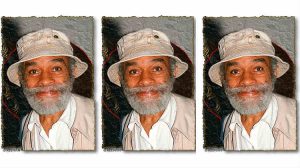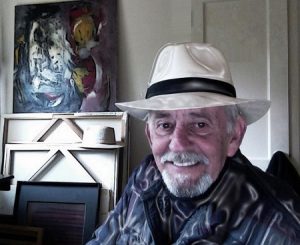
I first experienced what would eventually be called “Jam Band” music when I attended one of Ken Kesey’s Acid Tests in 1965. In order to get into the place you had to first walk literally through the Acid Test band then playing a warped rendition of Wilson Pickett’s “Midnight Hour.” The first person I locked eyes with was Jerry Garcia, lead guitarist of the then nascent Grateful Dead [née: The Warlocks], who went right on playing “Midnight Hour” for the next two and half hours!
Later I would listen to this same band of misfits hammering away at an electrified “Viola Lee Blues” from a truck bed in Panhandle Park in the Haight-Ashbury district, yet rather oddly, I did not then, nor do I now, think of myself as an actual “Deadhead.” To me, the Dead were the City’s “house band,” infinitely reliable and creative. Reliable in the sense that you could count on them to be an hour or two late to the gig, and then spend the next 20-30 min. tuning their guitars onstage before launching into (e.g.) a mind-blowing sixty-minute version of their improvisational epic “Cryptical Envelopment.”
If I was any sort of “head” musically in those days I usually turned to the Quicksilver Messenger Service when it came to getting a good dose of psychedelic music. John Cipollina and the QMS took the early stages of the “extended jam,” and their enraptured fans to aural spaces even a good dose of LSD couldn’t reach.
In those days I was an aspiring writer and artist living in the City, a bit of a rouser at times, and when the bumper stickers began screaming that I should “Love It [the USA] Or Leave It!” I bought a one-way ticket to London and split for the greater unknown.
When finally I returned some nine years later, the Vietnam war was over, Jimmy Carter was in the White House and to my great surprise, there was a glossy magazine on the racks devoted to the bands and the music that had created the essential if not cellular soundtrack for my younger life. Needless to say, I became a devoted fan of RELIX magazine, which I would later learn was initially founded when Les Kippel started it in 1974 as a communication tool for tapers. The interviews alone (Robert Hunter, Ned Lagin, Dan Healy, Tom Constanten and of course, the Dead), were priceless gems of insight and nostalgia regarding how this music was being created, and equally so if not more importantly, how it was being recorded. The evolution of recording techniques as well as the music itself had moved light years from where it had been just nine years prior, and I was fascinated, if not enlightened by what I found in the pages of RELIX.
And fascinated and intrigued you may well be reading RELIX The Book, Toni Brown and Lee Abraham’s exceptional collection of in-depth interviews, insightful articles. Highlights include: “R. Crumb,” “Willie Dixon – Blues Giant,” and “The Beat Road Never Ends” regarding Neal Cassady, hero of Kerouac’s “On The Road” and one of the most original Pranksters, along with engaging photographs and letters documenting and finally representing this wonderfully experimental time in the history of rock and roll.




